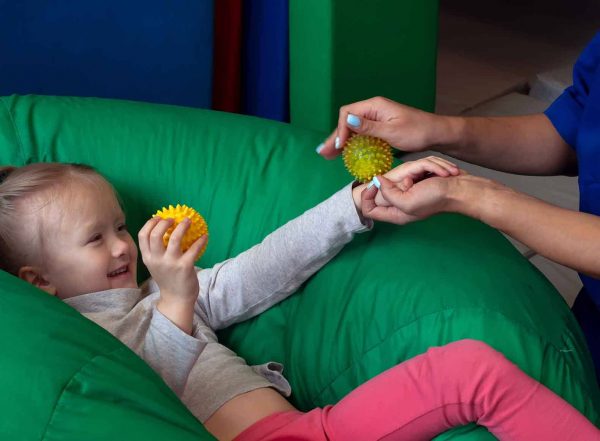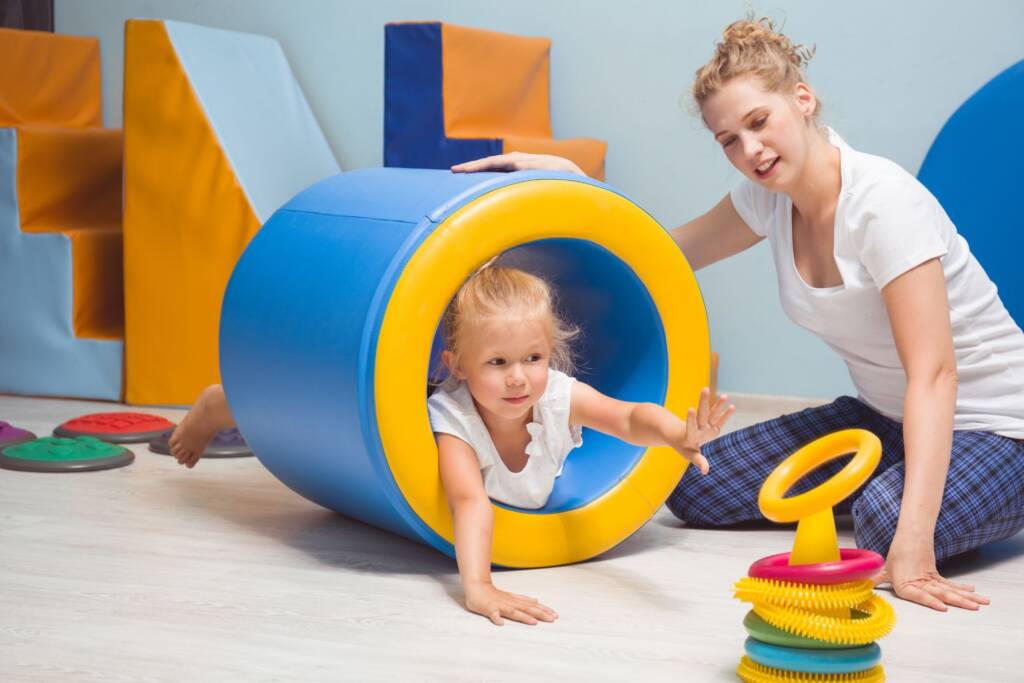Overview of Sensory Processing Issues
Sensory processing issues refer to difficulties in how the brain processes sensory information. For babies, this can mean they struggle to respond appropriately to sensory inputs such as sounds, touch, and light. These issues can impact their daily activities, behavior, and development.
Importance of Early Detection and Management
Early detection and management of sensory processing issues are crucial for ensuring that babies receive the support they need. Addressing these challenges early can lead to better outcomes and help prevent further developmental delays.
Objectives of the Article
This article aims to provide a comprehensive guide on understanding and managing sensory processing issues in babies. It covers various aspects, including identifying signs and symptoms, creating a sensory-friendly environment, and exploring treatment options.
Understanding Sensory Processing
What is Sensory Processing?
Sensory processing is the way the nervous system receives messages from the senses and turns them into appropriate motor and behavioral responses. It involves the integration and interpretation of sensory information from the environment.
How Sensory Processing Works in Babies
In babies, sensory processing is still developing. Their brains are learning to organize and respond to sensory inputs, which is crucial for their growth and interaction with the world.
The Role of the Nervous System
The nervous system plays a key role in sensory processing. It includes the brain, spinal cord, and nerves, which work together to process sensory information and produce responses.
Types of Sensory Processing Issues
Sensory Modulation Disorder
Sensory Over-Responsivity
Babies with sensory over-responsivity react too intensely to sensory stimuli. They may become distressed by loud noises, bright lights, or certain textures.
Sensory Under-Responsivity
In contrast, babies with sensory under-responsivity may not respond to sensory stimuli as expected. They might seem unaware of their surroundings or slow to react.
Sensory-Based Motor Disorder
Dyspraxia
Dyspraxia involves difficulties with motor coordination. Babies with dyspraxia might have trouble with tasks like crawling, reaching, or grasping objects.
Postural Disorder
Postural disorder affects the control of body movements and posture. Babies may struggle with sitting upright or maintaining balance.
Sensory Discrimination Disorder
Sensory discrimination disorder involves difficulty in distinguishing between different types of sensory input. This can affect a baby’s ability to recognize and respond to various stimuli appropriately.

Signs and Symptoms of Sensory Processing Issues in Babies
Physical Symptoms
Common physical symptoms include excessive crying, frequent vomiting, poor muscle tone, and delayed motor skills. Babies might also exhibit unusual reactions to touch, such as extreme sensitivity or lack of response.
Behavioral Symptoms
Behavioral symptoms can include irritability, difficulty calming down, aversion to certain textures or sounds, and trouble sleeping. Babies might also display repetitive behaviors or have trouble transitioning between activities.
Developmental Delays
Sensory processing issues can lead to developmental delays in areas such as speech, motor skills, and social interaction. It’s important to monitor milestones and seek early intervention if concerns arise.
Common Causes and Risk Factors
Genetic Factors
Genetics can play a role in sensory processing issues. Babies with a family history of sensory integration disorders or related conditions may be at higher risk.
Prenatal and Birth Complications
Complications during pregnancy or birth, such as premature birth or low birth weight, can increase the likelihood of sensory processing issues. Other risk factors include prenatal exposure to toxins or infections.
Environmental Influences
Environmental factors, such as a lack of sensory stimulation or excessive exposure to stressful situations, can also contribute to sensory processing issues. Providing a balanced and supportive environment is essential.
Diagnosis and Evaluation
When to Seek Professional Help
If you notice persistent symptoms or developmental delays, it’s important to seek professional help. Early diagnosis can lead to more effective interventions and support.
Diagnostic Criteria and Tools
Healthcare providers use various tools to diagnose sensory processing issues. These can include parent questionnaires, direct observation, and standardized tests to assess sensory and motor skills.
Role of Occupational Therapists
Occupational therapists are key in diagnosing and treating sensory processing issues. They evaluate the child’s sensory integration and develop personalized treatment plans to address specific needs.
Creating a Sensory-Friendly Environment
Adapting the Home Environment
Make your home a sensory-friendly space by reducing clutter, minimizing loud noises, and ensuring proper lighting. Create safe and comfortable areas for your baby to explore.
Sensory-Friendly Toys and Tools
Choose toys and tools that provide appropriate sensory stimulation. This can include soft textures, gentle sounds, and visually engaging items. Avoid overly stimulating or complex toys that can overwhelm your baby.
Reducing Sensory Overload
Identify and manage sources of sensory overload, such as bright lights or loud sounds. Establishing a predictable routine can also help your baby feel more secure and reduce sensory-related anxiety.
Managing Sensory Processing Issues
Sensory Diets
What is a Sensory Diet?
A sensory diet is a personalized plan that includes activities and strategies to help regulate a child’s sensory input. It aims to provide the right amount of sensory stimulation to improve focus, behavior, and daily functioning.
Designing a Sensory Diet for Your Baby
Work with an occupational therapist to design a sensory diet tailored to your baby’s needs. This can include activities like swinging, bouncing, or gentle massage, which provide specific types of sensory input.
Occupational Therapy
Techniques and Strategies
Occupational therapy uses various techniques to improve sensory processing. These can include sensory integration therapy, motor planning exercises, and play-based interventions.
Benefits of Occupational Therapy
Occupational therapy can enhance your baby’s sensory integration, improve motor skills, and support overall development. It also provides parents with strategies to use at home.
Parent-Led Interventions
Activities to Do at Home
Incorporate sensory activities into your daily routine. These can include playing with textured toys, practicing gentle touch, and using sensory bins filled with different materials.
Building a Routine
Establish a consistent daily routine to provide structure and predictability. This can help your baby feel more secure and reduce sensory-related stress.
Developing Communication Skills
Understanding Baby’s Cues
Learn to recognize and respond to your baby’s cues. This can include gestures, facial expressions, and sounds that indicate their sensory needs or discomfort.
Enhancing Communication Through Play
Use playtime to enhance communication skills. Engage in activities that encourage eye contact, mimic sounds, and promote interaction.
Encouraging Social Interaction
Encourage social interaction through playdates and group activities. This helps your baby develop social skills and learn to navigate different sensory environments.

Nutrition and Sensory Processing
Impact of Diet on Sensory Processing
A balanced diet can positively impact sensory processing. Ensure your baby gets the right nutrients, including vitamins and minerals that support brain function.
Foods to Include
Include foods rich in omega-3 fatty acids, such as fish and flaxseed, which support brain health. Whole grains, fruits, and vegetables provide essential nutrients for overall development.
Foods to Avoid
Avoid foods with artificial additives, preservatives, and high sugar content. These can exacerbate sensory processing issues and impact behavior.
The Role of Play in Sensory Development
Importance of Play for Sensory Integration
Play is crucial for sensory integration. It provides opportunities for babies to explore different textures, sounds, and movements in a fun and engaging way.
Types of Play Activities
Incorporate a variety of play activities, such as water play, sandbox play, and musical games. Each activity offers different sensory experiences that can enhance your baby’s development.
Creating a Balanced Play Routine
Create a balanced play routine that includes both structured and unstructured activities. This allows your baby to enjoy guided play while also exploring their environment freely.
Emotional and Behavioral Management
Managing Meltdowns and Tantrums
Meltdowns and tantrums can be common in babies with sensory processing issues. Stay calm, provide comfort, and use strategies like deep pressure or a calming sensory activity to help your baby regain control.
Building Emotional Resilience
Help your baby build emotional resilience by teaching coping skills and providing a supportive environment. Encourage self-soothing techniques and offer praise for positive behaviors.
Coping Strategies for Parents
Parents also need coping strategies to manage stress and stay patient. Seek support from professionals, join parent groups, and practice self-care to maintain your well-being.
Educational Resources and Support Systems
Books and Online Resources
There are many books and online resources available to help parents understand and manage sensory processing issues. Look for reputable sources that offer practical advice and evidence-based strategies.
Support Groups and Networks
Join support groups and networks to connect with other parents facing similar challenges. Sharing experiences and tips can provide valuable support and encouragement.
Professional Organizations
Professional organizations, such as the American Occupational Therapy Association, offer resources and information on sensory processing issues. They can also help you find qualified therapists and support services.
Real-Life Case Studies
Success Stories from Parents
Hearing success stories from other parents can be inspiring and reassuring. Learn from their experiences and strategies for managing sensory processing issues.
Insights from Therapists
Therapists can provide valuable insights into effective treatments and interventions. Consider their recommendations when developing a plan for your baby.
Lessons Learned from Managing Sensory Issues
Every family’s journey is unique, and there are always lessons to be learned. Reflecting on your experiences can help you find new ways to support your baby’s development.
Frequently Asked Questions (FAQs)
Addressing Common Concerns
Parents often have many questions about sensory processing issues. Address common concerns, such as how to identify symptoms, what treatments are available, and how to support your baby at home.
Practical Tips and Solutions
Provide practical tips and solutions for everyday challenges. This can include advice on managing meltdowns, creating a sensory-friendly environment, and finding appropriate activities.








